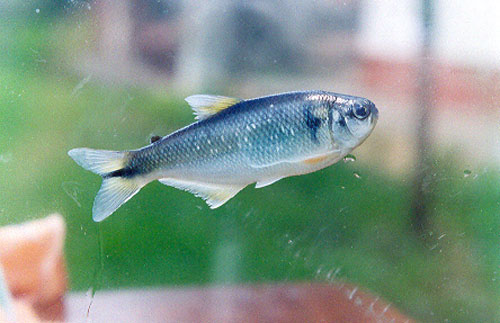| Characidae (Characins; tetras), subfamily: Stevardiinae |
| 11.9 cm SL (male/unsexed) |
|
benthopelagic; freshwater |
| South America: Amazon River basin and mountain streams of the eastern slope of Peru and the Beni River basin. |
|
Dorsal soft rays (total): 8-8; Anal soft rays: 22-27; Vertebrae: 42-43. This species is distinguished from most of its congeners by the number of lateral line scales 44-48 (vs. 39-43 or 48-58). It differs from H. beni, and H. dentatus by the number of branched anal-fin rays (22-27 vs. 15-19 and 28-34, respectively); from H. cairoense by the number of scale rows above lateral line (8-10 vs. 6-7); from H. helleri by the number of scales along anal-fin base scale sheath (17-26 vs. 6-12) and the number of scale rows above lateral line (8-10 vs. 7-8); from H. polyodon by the number of caudal peduncle scales (18-20 vs. 16), head length (22.0-26.0 vs. 20.9-22.9% SL), and upper jaw length (45.2-52.6 vs. 43.7-45.6% HL); from H. raqueliae by the number of predorsal scales (15-19 vs. 10-13) and by the number of cusps of first maxillary tooth (3 vs. 5) (Ref. 85819). |
|
|
Least Concern (LC); Date assessed: 24 April 2014 Ref. (130435)
|
| harmless |
Source and more info: www.fishbase.org. For personal, classroom, and other internal use only. Not for publication.

